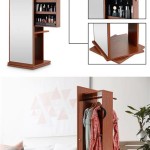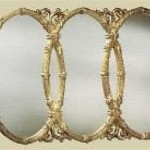How to Make an LED Backlit Mirror
Creating a custom LED backlit mirror offers a stylish and functional addition to any room. This process involves carefully combining a standard mirror with LED strip lights to achieve a diffused, ambient glow. This article outlines the necessary materials, tools, and steps required to construct a backlit mirror.
Materials Required:
The foundation of this project lies in selecting appropriate materials. A high-quality mirror serves as the centerpiece. The dimensions of the mirror will dictate the quantities of other materials. LED strip lights, available in various colors and densities, provide the illumination. A power supply suitable for the chosen LED strips is crucial. Mirrored acrylic or reflective window film can enhance the light diffusion. Wood or aluminum framing provides structural support and conceals the LED components. Mounting hardware appropriate for the chosen frame and wall type completes the material list.
Tools Required:
Several tools are necessary for a successful assembly. A measuring tape and ruler ensure accurate measurements and cuts. A pencil or marker assists with marking cutting lines and placement guides. A cutting tool suitable for the framing material (e.g., saw for wood, metal shears for aluminum) is essential. A drill and appropriate drill bits are needed for creating pilot holes and securing the frame. Wire strippers and a soldering iron (optional) are required for electrical connections. A hot glue gun or adhesive tape helps fix the LED strips and diffuser. Safety glasses should always be worn during cutting and drilling.
Step-by-Step Construction:
1. Measuring and Cutting the Frame: Begin by accurately measuring the dimensions of the mirror. The frame’s internal dimensions should match or slightly exceed these measurements. Transfer these measurements to the framing material and carefully cut the pieces to form a rectangular frame. Ensure precise cuts for a clean, professional finish.
2. Assembling the Frame: Assemble the cut frame pieces using appropriate joinery techniques. Wood frames can be joined using wood glue and screws, while aluminum frames may require specialized corner brackets. Ensure the frame is square and secure before proceeding.
3. Attaching the Mirror to the Frame: Carefully place the mirror within the assembled frame. Secure the mirror using mirror adhesive or clips specifically designed for this purpose. Ensure the mirror is centered and flush with the frame.
4. Preparing the LED Strips: Measure the inner perimeter of the frame and cut the LED strips to the corresponding length. If the LED strips require soldering for connections, carefully follow the manufacturer's instructions. Test the LED strips with the power supply to ensure they function correctly before proceeding.
5. Applying the Diffuser (Optional): If using a diffuser material like mirrored acrylic or reflective window film, cut it to size to cover the back of the mirror within the frame. This step helps to spread the light more evenly and reduces the visibility of individual LEDs.
6. Mounting the LED Strips: Attach the LED strips to the inner perimeter of the frame, facing inwards toward the mirror. Use adhesive tape or a hot glue gun to secure the strips in place. Ensure the strips are evenly spaced and aligned for consistent illumination.
7. Wiring the LED System: Connect the LED strips to the power supply according to the manufacturer’s instructions. Ensure all connections are secure and insulated. Consider using wire connectors for a cleaner and more professional finish.
8. Mounting the Backlit Mirror: Choose appropriate mounting hardware based on the frame material and wall type. Mark the desired location on the wall and pre-drill holes for the mounting hardware. Carefully hang the backlit mirror, ensuring it is level and secure.
Safety Precautions:
Throughout this process, prioritize safety. Wear safety glasses when cutting and drilling. Disconnect the power supply when working with the LED strips and wiring. Follow the manufacturer’s instructions for all materials and tools. Consult a qualified electrician if uncertain about any electrical connections. Adequate ventilation is important when using adhesives or soldering.
Customization Options:
Several customization options exist to personalize the backlit mirror. Different LED colors create various moods and ambiances. LED strips with varying densities offer control over light intensity. Smart LED strips with integrated dimming and color-changing capabilities provide further customization through mobile applications or dedicated controllers. The frame itself can be customized with paint, stain, or other decorative elements.

How To Diy Vanity Mirror With Led Strip Lights

How To Diy Vanity Mirror With Led Strip Lights

Bathroom Remodel Diy Backlit Mirror Leah And Joe Home Projects Crafts

Bathroom Remodel Diy Backlit Mirror Leah And Joe Home Projects Crafts

Custom Led Backlit Bathroom Mirror Diy Project

25 Beautiful Diy Vanity Mirror That Is Easy And To Do Most Of This Projects Can Be Bathroom Makeover Small Mirrors

Led Mirror Halo Bathroom Lighted Clearlight Designs

8 Reasons Why You Should Have A Backlit Mirror In Your Bathroom

Bathroom Mirror With Led Lights 50x70 Cm Wall Mounted Vanity Dimmable Diy At B Q

Es Diy 84 In W X 32 H Rectangular Frameless Led Light Anti Fog Wall Bathroom Vanity Mirror Rgb Backlit Front Lighted Cjfxbm8432rgb The Home Depot








